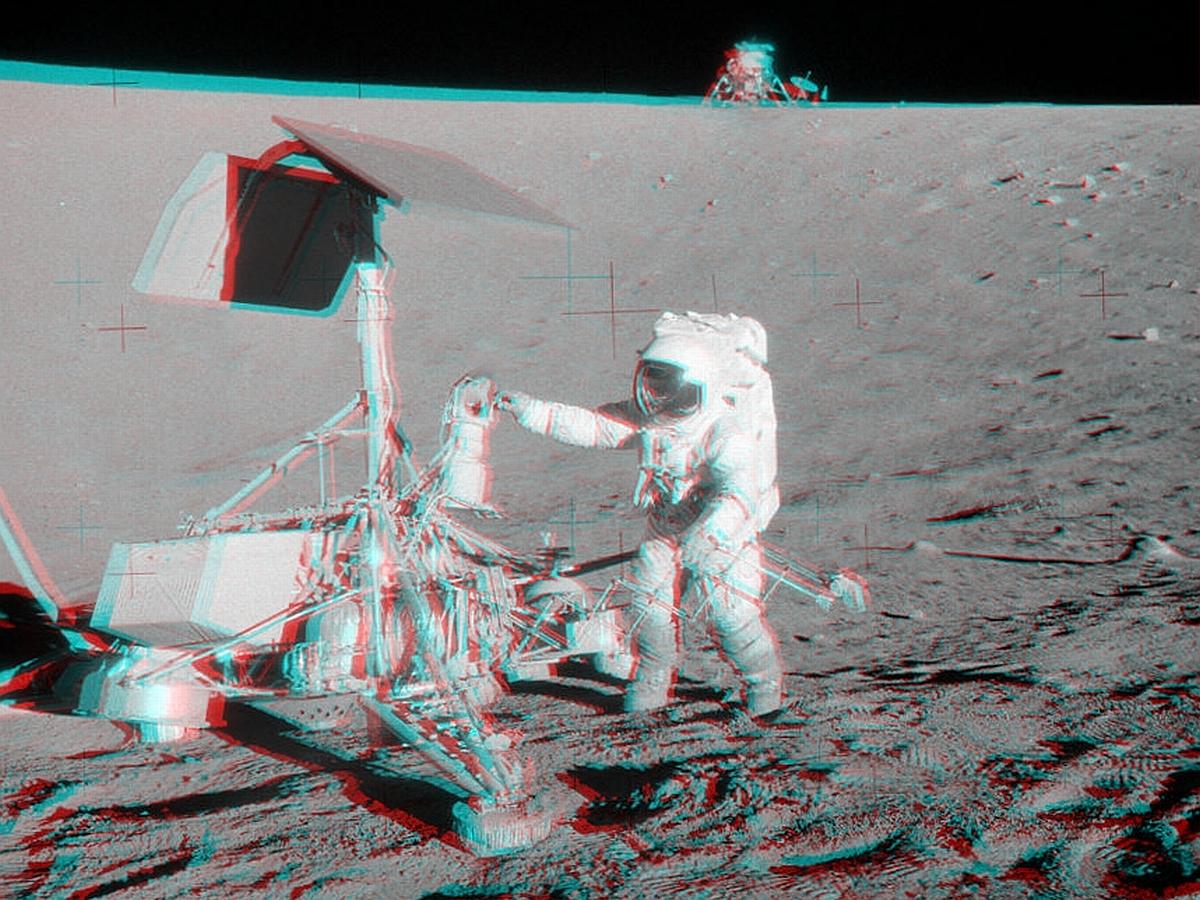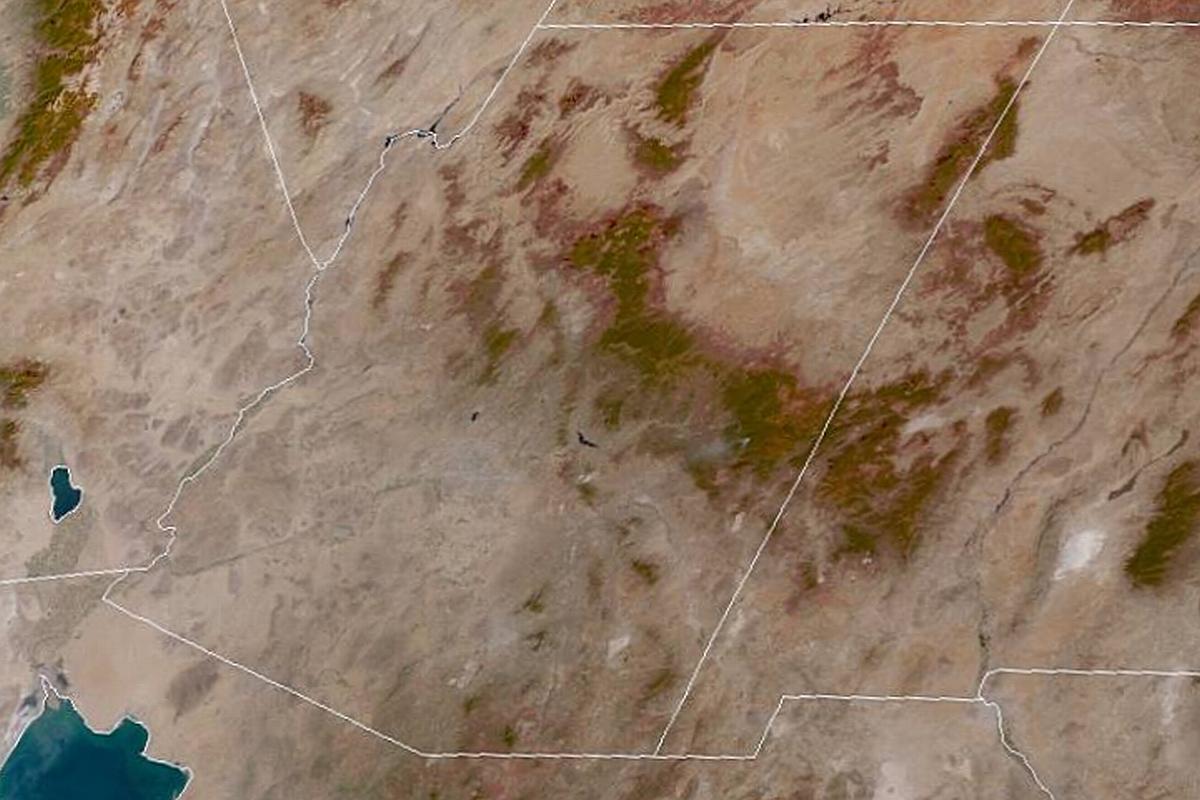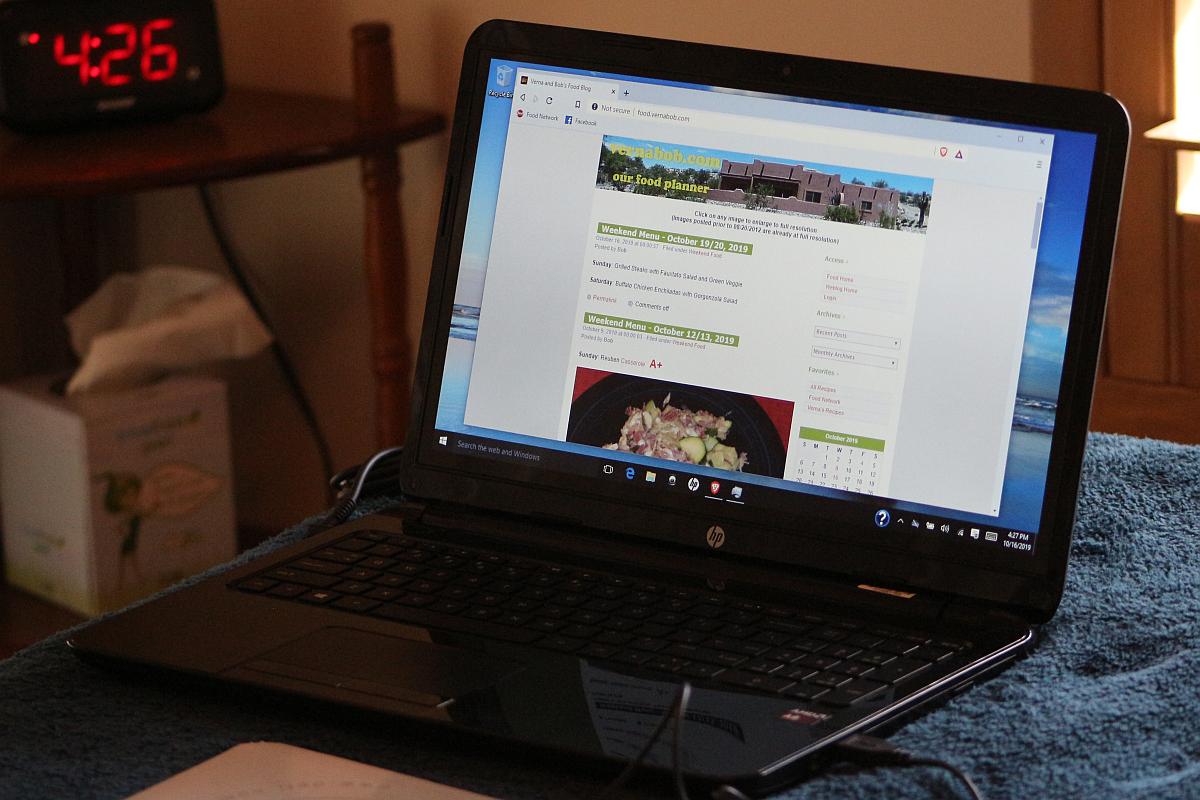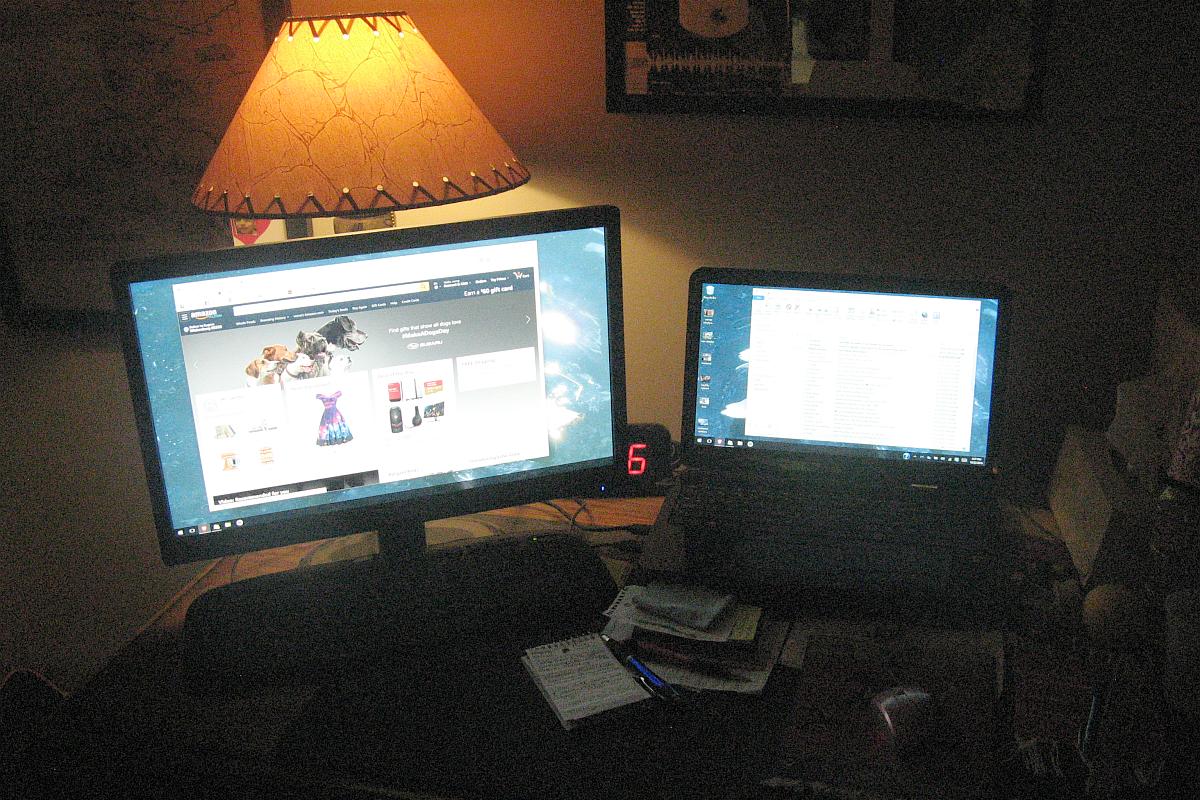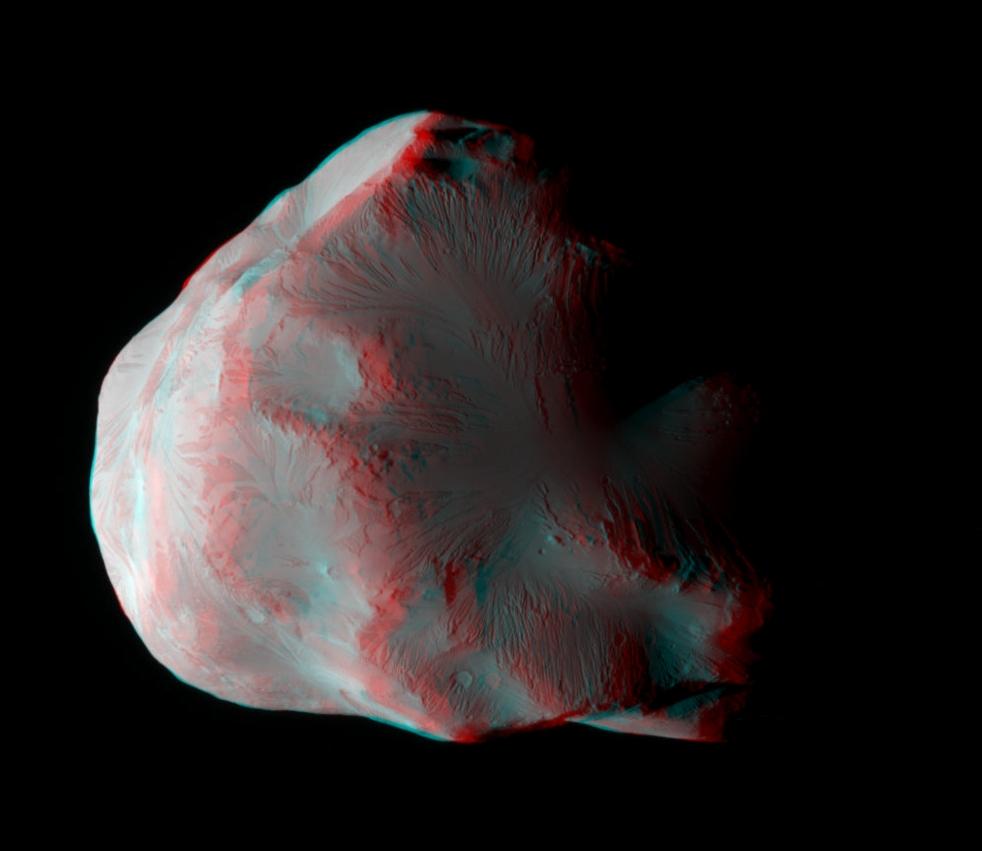Fifty years ago, there were men walking on the moon. This 3D photo of Pete Conrad jiggling the surveyor lunar lander was taken by Alan Bean in two images merged into a red-cyan anaglyph image. Click on the image to enlarge.
Not mentioned in the below Article from APOD was the fact that the astronauts brought back the robotic scoop from the spacecraft which I later saw in a display window in Building 5 at the Hughes Aircraft Facility in Culver City, CA.
This is the blurb from APOD:
Put on your red/blue glasses and gaze across the western Ocean of Storms on the surface of the Moon. The 3D view features Apollo 12 astronaut Pete Conrad visiting the Surveyor 3 spacecraft 50 years ago in November of 1969. Surveyor 3 had landed at the site on the inside slope of a small crater about 2 1/2 years earlier in April of 1967. Visible on the horizon beyond the far crater wall, Apollo 12’s Lunar Module Intrepid touched down less than 200 meters (650 feet) away, easy moonwalking distance from the robotic Surveyor spacecraft. The stereo image was carefully created from two separate pictures (AS12-48-7133, AS12-48-7134) taken on the lunar surface. They depict the scene from only slightly different viewpoints, approximating the separation between human eyes.
Of course, if you don’t yet have your free pair of 3D glasses to view the image above, you can see the 2D version here.

